The banquet of Jupiter and Juno
Oil on canvas, 70 x 110 cm
With frame, 90 x 128 cm
In the shining eighteenth century, a century of rococo grace and rediscovery of nature, the figure of Francesco Zuccarelli (1702-1788) emerged as one of the most appreciated and influential landscape painters, capable of enchanting the courts and the European aristocracy with his visions idyllic and harmonious. His career, full of travels and successes, led him to move between the nerve centers of the art of his time, leaving an indelible mark especially in Venice and London. Born in Pitigliano, in the province of Grosseto, on 15 August 1702, Zuccarelli undertook his artistic training in Tuscany, first in Florence in the workshop of Paolo Anesi. Subsequently, he moved to Rome, where he deepened his studies with Giovanni Maria Morandi and Pietro Nelli. It was in the Eternal City that Zuccarelli decisively approached the landscape genre, assimilating the lessons of the great masters of the seventeenth century, in particular Claude Lorrain. From them he learned to construct scenes immersed in a golden and timeless light, with a compositional balance that would become one of his stylistic features. It is here that his "Arcadian world" begins to take shape, made up of idealized natures and figures that populate a lost golden age. His career took a decisive turn when he moved to Venice. Here, Zuccarelli quickly entered the dynamic artistic environment of the lagoon, which saw landscape painting and a taste for the idyllic landscape flourish. In this context, he entered into competition and dialogue with other important landscape architects, such as Giuseppe Zais, helping to define the visual language of the eighteenth-century Venetian landscape. His painting, characterized by a serene atmosphere and meticulous attention to detail, began to enjoy great success.However, it was England that consecrated him at an international level. In 1752, Francesco Zuccarelli settled in London, where he found a particularly receptive environment for his art. The rich English clients, eager to bring the charm of Italy and the beauty of its landscapes into their homes, welcomed him with enthusiasm. Zuccarelli quickly became one of the most sought-after artists, and his works, which often immortalized Italian landscapes populated by bucolic figures and classical ruins, became a symbol of the Grand Tour and Rococo taste. His influence was such that it inspired numerous local artists, including the famous Joshua Reynolds. During his almost two decades in England, Zuccarelli was not only a successful painter: he was also among the founding members of the prestigious Royal Academy in 1768, testifying to his prestige and influence in the British artistic landscape. He also created important commissions, such as a series of tapestries for Charles Wyndham, 2nd Earl of Egremont. After an initial return to Venice, Zuccarelli returned to London in 1765 and remained there until 1773, when he returned permanently to Italy, now rich and admired. He settled in Florence, his city of education, where he continued to work tirelessly until his death on 30 December 1788. Zuccarelli's works are scattered in numerous collections and museums around the world, with a significant presence in England, testifying to the vast production created for British clients. Among his best-known canvases are landscapes with mythological or biblical figures, pastoral scenes with shepherds and animals, and views of the Roman or Venetian countryside, all permeated by a clear light and a feeling of harmony and serenity.Zuccarelli was an artist who knew how to interpret and shape the taste of his time, creating a kind of landscape that evoked an ideal world, where nature and man lived in perfect harmony. His ability to blend the beauty of the landscape with the narration of small scenes of life or ancient myths makes him an essential protagonist of eighteenth-century Europe.
This interesting Banquet of Jupiter and Juno turns out to be very close to Zuccarelli's painting: the pastel tones and Arcadian atmospheres are taken from the painter of Tuscan origins, who look not only at the tradition of Italian Rococo but also at the suggestions beyond the Alps of Poussin and Lorrain. The fluid brushwork and the quick, defined touch are also reminiscent of the works most representative of Zuccarelli's activity.
The Banquet of Jupiter and Juno is a recurring and fascinating iconographic theme in the art of different eras, which depicts the pair of Olympian gods gathered in a festive banquet, often accompanied by other divinities, Muses and nymphs, as well as music, dances and abundance of food and nectar. In the painting in question, Jupiter, characterized by a thick white beard, and his wife Juno, wrapped in a refined red cloak, can be identified respectively at the two ends of the table. Followed by Ganymede, visible in the foreground with a green tunic, and Hebe, placed on the right side in the act of offering a dish to the guests. The scene is enriched by the presence of nine Muses, some of which bear musical instruments such as the harp and the lyre, as well as garlands of flowers. The composition is completed by the three nymphs placed on the left side of the canvas, one of whom holds a plate full of fruit, one is kneeling and the other is depicted in a position above.


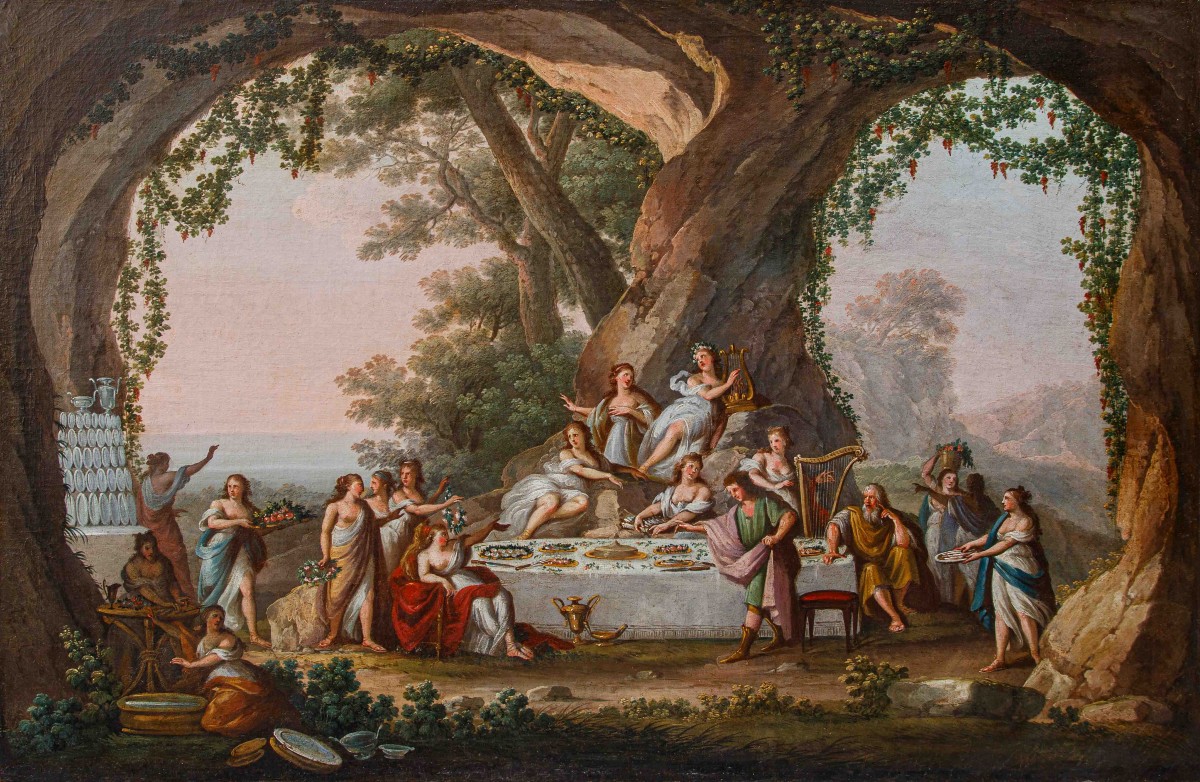
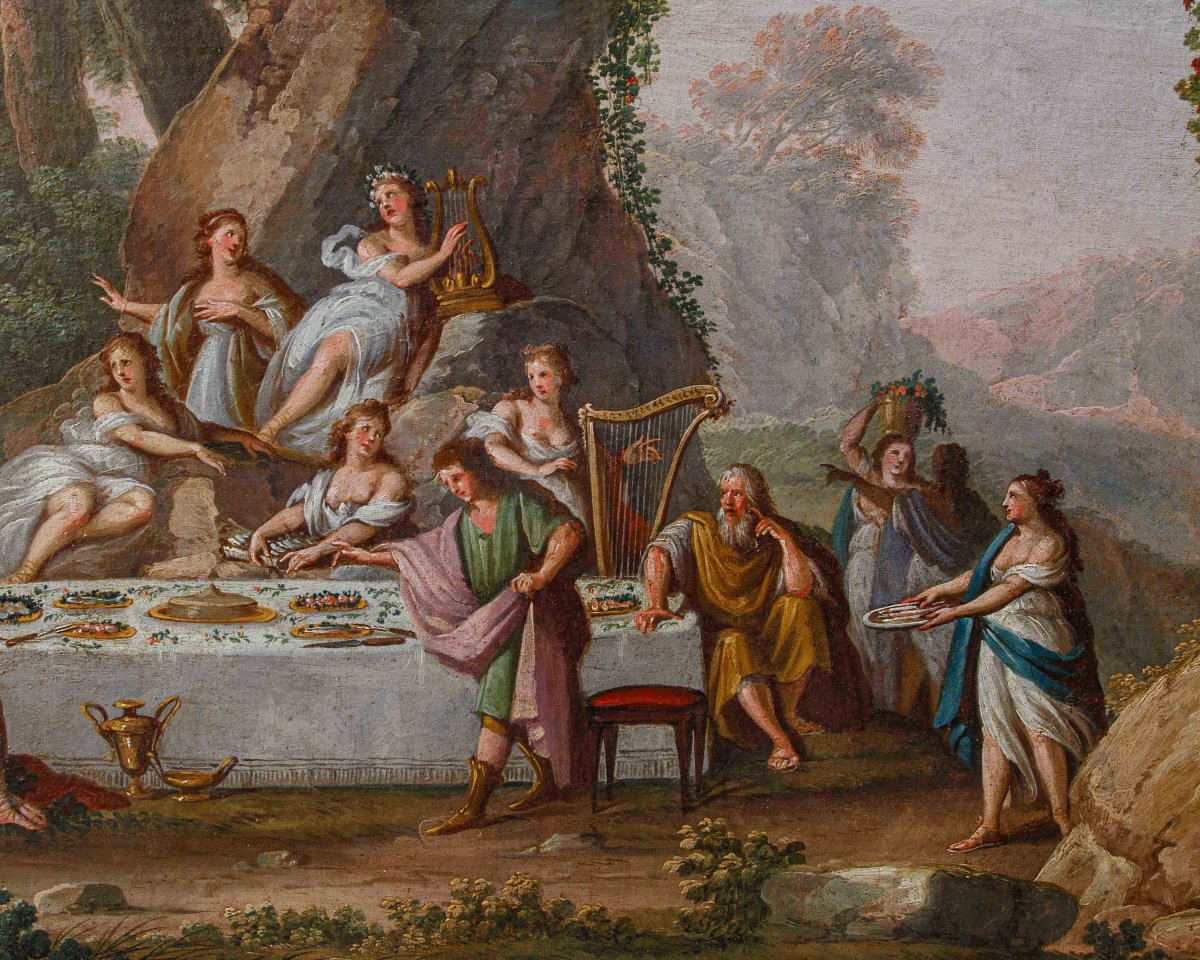

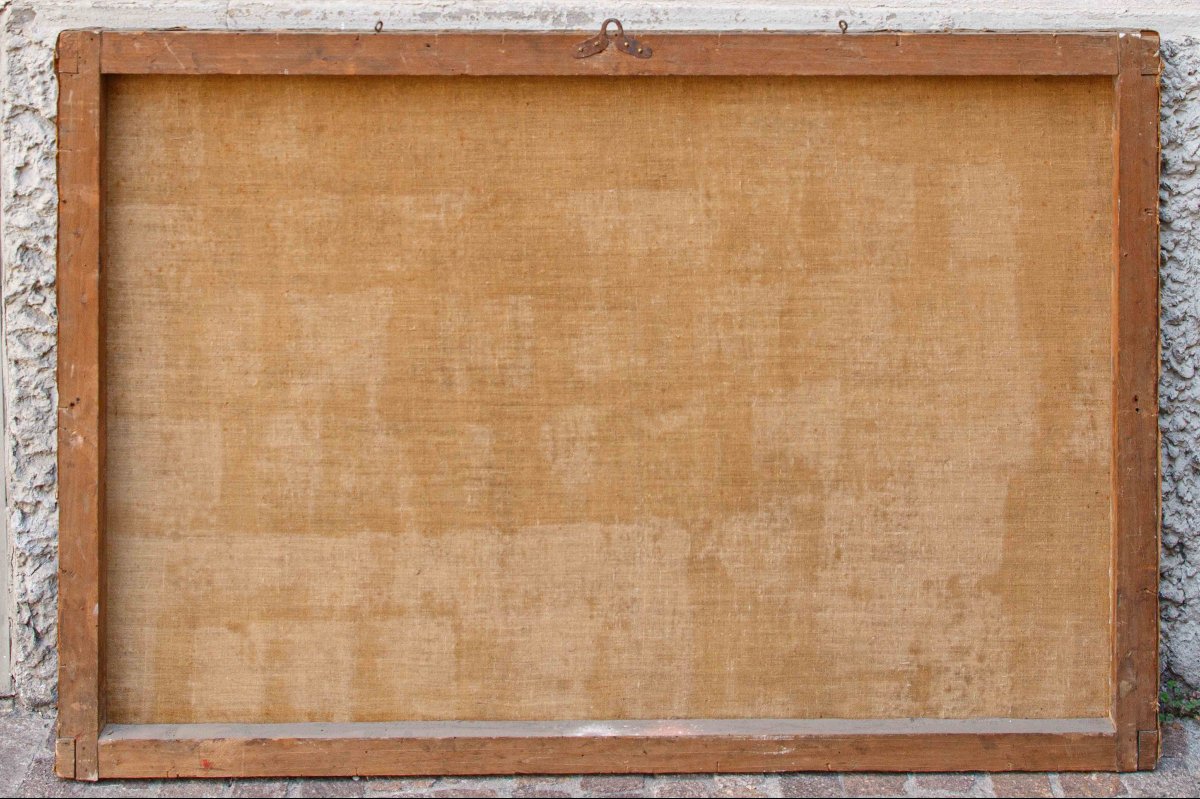
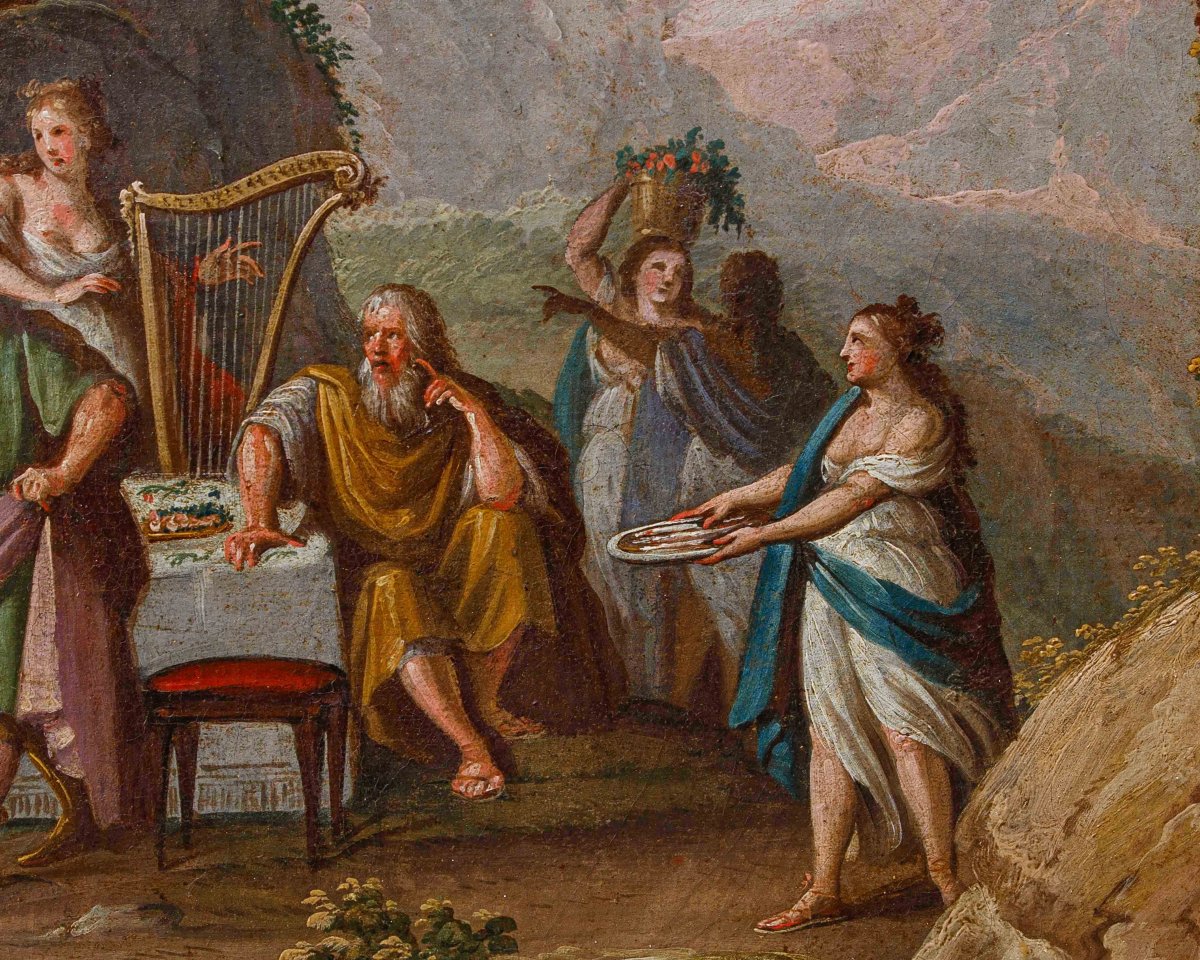
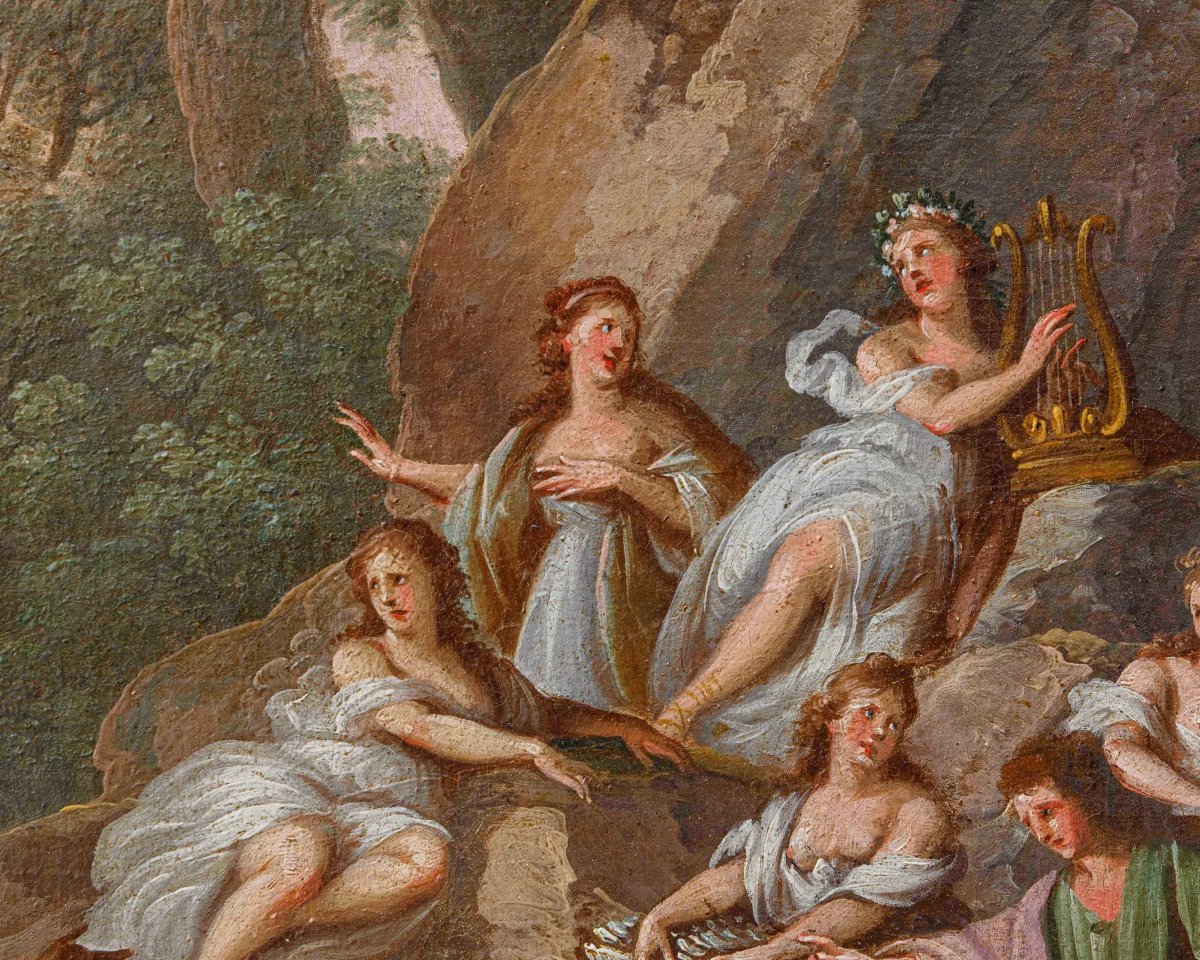

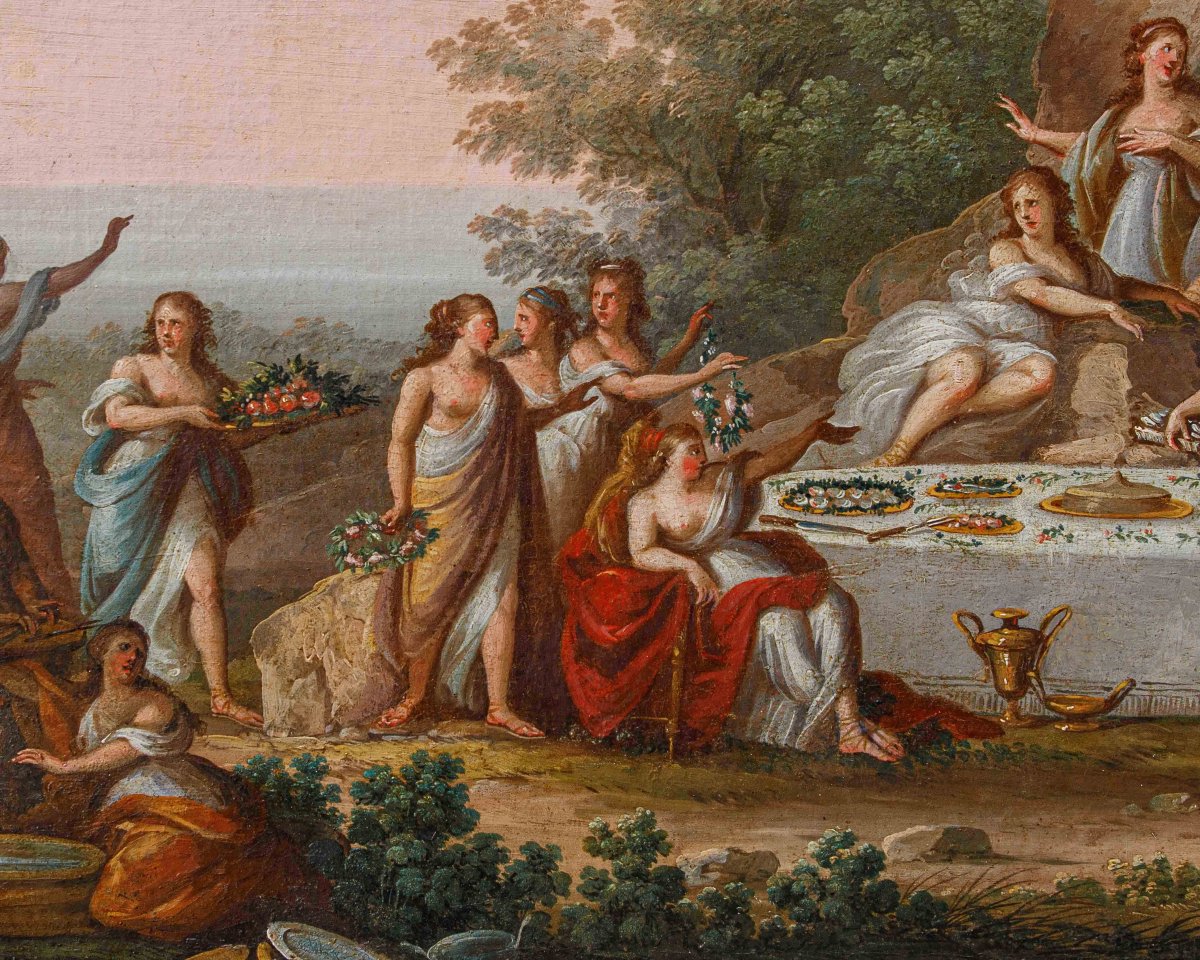


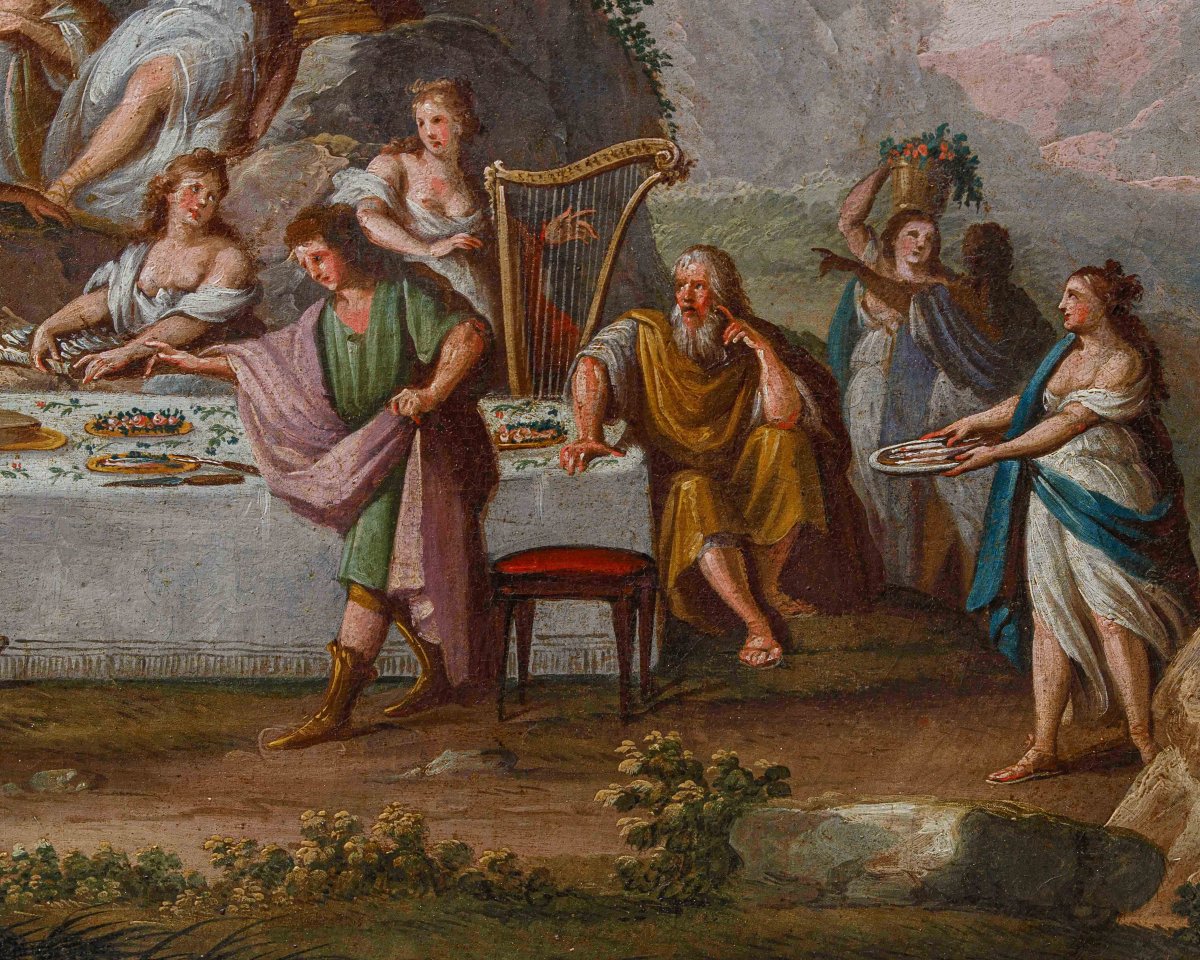


















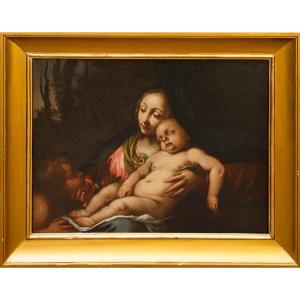
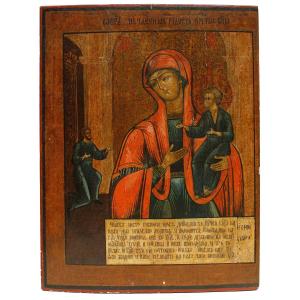


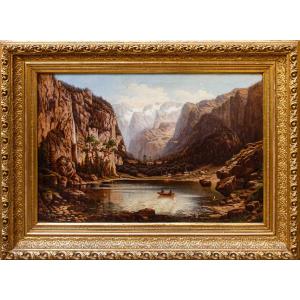
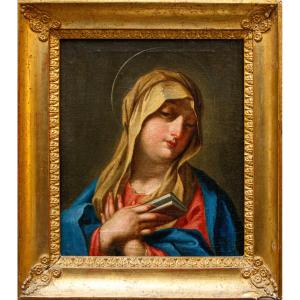



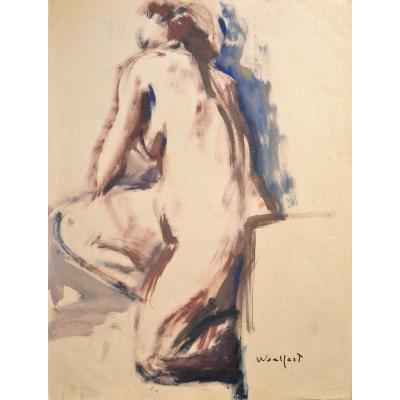



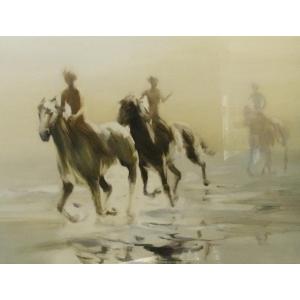



 Le Magazine de PROANTIC
Le Magazine de PROANTIC TRÉSORS Magazine
TRÉSORS Magazine Rivista Artiquariato
Rivista Artiquariato